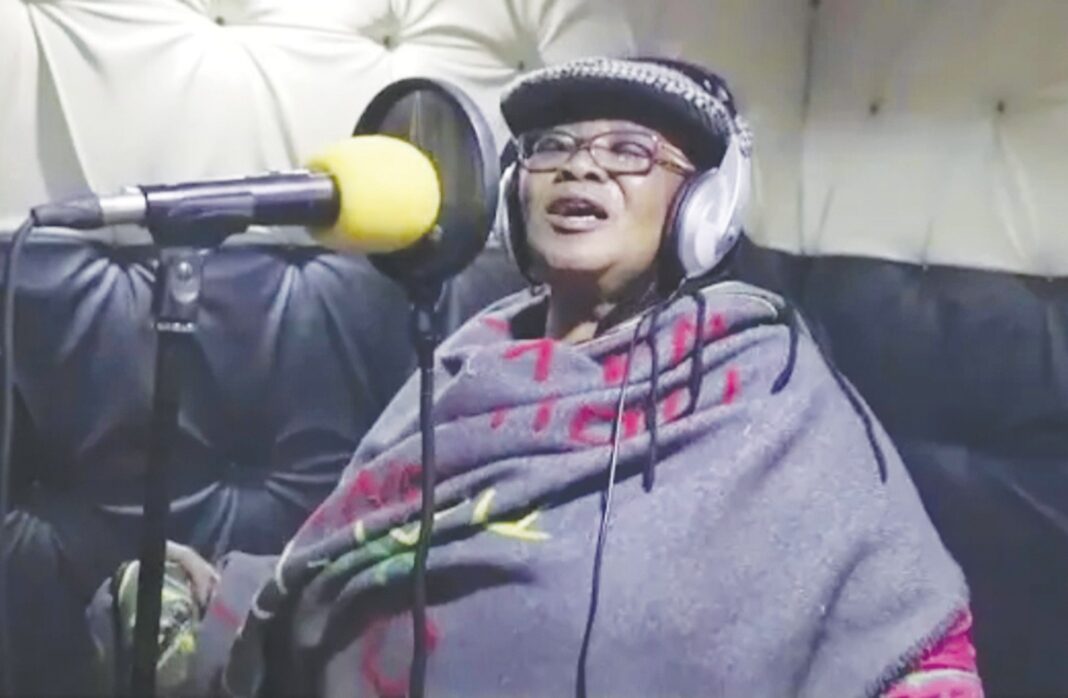By ‘Majirata Latela
The imminent oil exploration at Mpshatla in the Mafika-Lisiu area bordering northern Butha-Buthe and Qwa-Qwa is set to reveal whether there is sufficient oil for drilling.
This after a new Lesotho-based company was given a thumps up to explore the area for possible oil deposits.
An appointment letter by the ministry of mining gave Cinless Group of Companies (PTY) LTD the greenlight to conduct the exploration at Liqobong. This is according to a letter dated January 4 2021 signed by the mining ministry’s principal secretary, Advocate Tšokolo Maina.
In the letter, the ministry of mining confirms the appointment of Cinless Group of Companies (PTY) LTD to start exploration of oil at Mpshatla village in Liqobong as set out in an accompanying Memorandum of Agreement.

Signage of Liqobong Oil Mine
The commissioner of mines, Pheello Tjatja this week said the appointed company has only signed the Memorandum of Understanding with the ministry allowing it to explore the area.
“Yes there could be oil deposits seen around that place but until there is assurance after prospecting the company cannot be given rights to mine. We have given the company exploration permit so that they can discover the oil that can be found there.
“Oil deposits may be there but the question that we are looking for is to establish whether there is viable oil to mine or not,” Tjatja said.
In an interview, one of the directors of Cinless Group of Companies, Kopi Mothebesoane indicated that in 2017 he heard on the peripheries about oil deposits seen at Mpshatla. He, together with his brother decided to visit as they were interested to know if there was enough oil to drill.
“We met with the area chief who told us that there have been many groups of people, from local or foreign countries who have been asking about the oil. We were told that the deposits have been discovered since 1981.
“After seeing the place, we then started looking for investors and part of the investors who came on board are from South Africa. Currently we have more investors from countries such as Canada, the United Kingdom and the United States of America.
“We have gone through all stages to get access to the place, from the community members, areas chief, the councillors, the District Administrator and the Principal Chief as well. We made an application to the ministry of mining which granted us a certificate to explore if we could find oil in that place,” he said.
Mothebesoane further added that there was a delay in obtaining an appointment letter. The ministry has never issued any license for oil mining. He said the country for decades now has been known for mining minerals other than oil.
“If it were possible for the government to carry out exploration activities, we wouldn’t be engaged in the activity. But due to limited economic standards, we have invited the investors to assist in the exploration. When we find that there is enough oil to mine, we will then apply for a mining licence.
“We also appeal to our government to help us retain investors by guiding us into following the correct steps and not letting us fail because what we are doing is not for us only and our families but also for the Basotho nation.
“If there is enough oil in that place to mine, that means the economy of the country will grow, more jobs will be secured and the communities where the oil will be mined from will benefit a lot from various projects,” he added.
In October 2020, theReporter made an inquiry into the Lesotho’s oil mystery which revealed that there is ample, documented and as-yet-undisputed evidence of the existence of crude oil deposits in Lesotho.
But, for reasons ranging from double-dealing foreign companies to lack of political will on the part of government, the oil deposits have remained cloaked in secrecy for a better part of the last century, and this mineral has never been tapped.
As much as the production of crude oil and natural gas generate enormous costs on the environment, it also directly impacts on the economy of the producing state. The latter, among other reasons, is the motive for investing huge capital in the industry.
In fact, there are those who believe Lesotho has enough oil to last 100 years. They claim this was discovered in the 1970s at Mpshatla in the Mafika-Lisiu area bordering northern Botha Bothe and QwaQwa by a company from the Gulf. They say it was kept a secret because at the time, South Africa’s apartheid government would have easily moved to annex Lesotho.
At the time those interviewed, including geologists, confirmed the existence of oil in Lesotho the question is, is there enough oil for commercial exploration?
theReporter met up with the now deceased Seeta Seeta, an ordinary Mosotho man, whose colleagues referred to as ‘a moving encyclopaedia of Lesotho minerals’, and who had dedicated a better part of his life to unravelling Lesotho’s minerals.
Seeta was convinced that Lesotho could be having multiple barrels of crude oil which no one seems to be willing to ensure the natural resource benefits.
He said one area with abundant oil deposits is Mahobong in Leribe, some 120km north- East of the capital Maseru.
“We have oil deposits in two shallow wells and deep water blocks. The shallows can only produce up to 9000 barrels a day while the deep water blocks can produce between 1000 and 1 000 000 barrels a day.
Retired university Professor Qalabane Chakela revealed last year that the Report on Geology of the Basutoland published in 1947 by G.M Stockley following a study conducted between 1938 and 1940, and went on to advise that the issue of oil should not be taken lightly. Stockley was an American hired as a government geologist.
Chakela warned that people tend to get over-excited when they see something that looks like oil in rocks, only to find that it is actually nothing to write home about.
“Oil is there in Lesotho but the question is, is it enough to warrant commercial exploration? A simple example is clay which Basotho have been using for years. But do we have enough to sell?”
Stockley’s report further indicates that geologist Van Eeden, who conducted the actual study, found that even though there may be small structures which are not incompatible with typical “oil” structures; the hopes of striking commercial quantities of oil in depth are slender.
“Van Eeden says other areas which show oil deposits include, a half dome exposed on the Basutoland side Butha- Buthe Camp, Mohobong- Thaba Phatsoa Dome, St. Monica’s Hlotse area, Tsakoela area, Upper Phuthiatsana River, Pafulo Store area, Peka Drift- Kolonyame Store area, Hanger’s Drift- Maseru area, Sebapala inlier.
“The consensus of expert opinion is, therefore definitely against the view that any workable petroleum deposits occur in the Karroo System. It is certain that there are no indications on the exposed rocks of Basutoland; and there are no clues pointing to subterranean sources. The geological mapping of the area under consideration shows that the rock structures are not incompatible with those exhibited by petroliferous strata…”, the report said.
Meanwhile, theReporter’s preliminary inquiry revealed then that a local business magnate who was minister in the 1993 government took samples of local oil to China for analysis in 2013. It is not clear in what capacity he did that, but the outcome of his trip is still unknown.
Unconfirmed reports suggested last year that there were already a few legally registered oil exploration companies in Lesotho, one of which was in talks with government about possible exploration.









